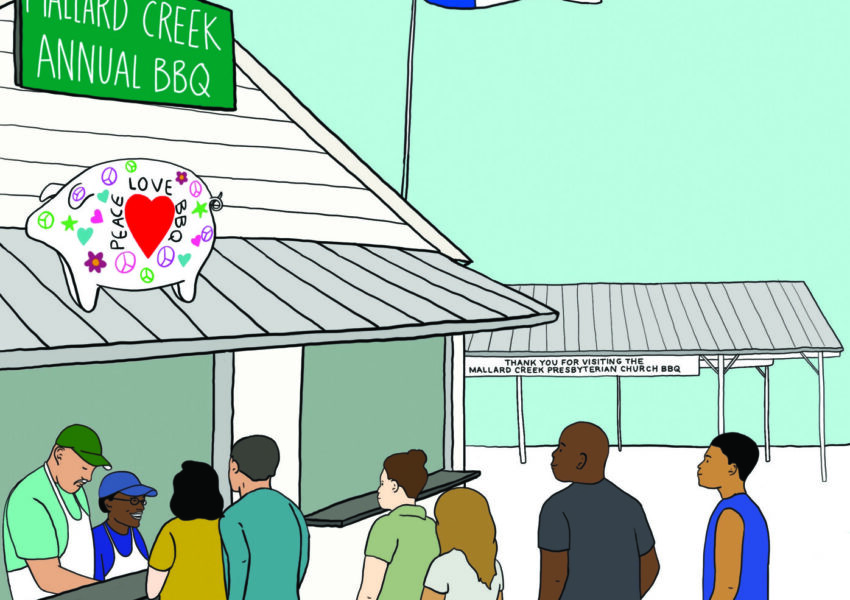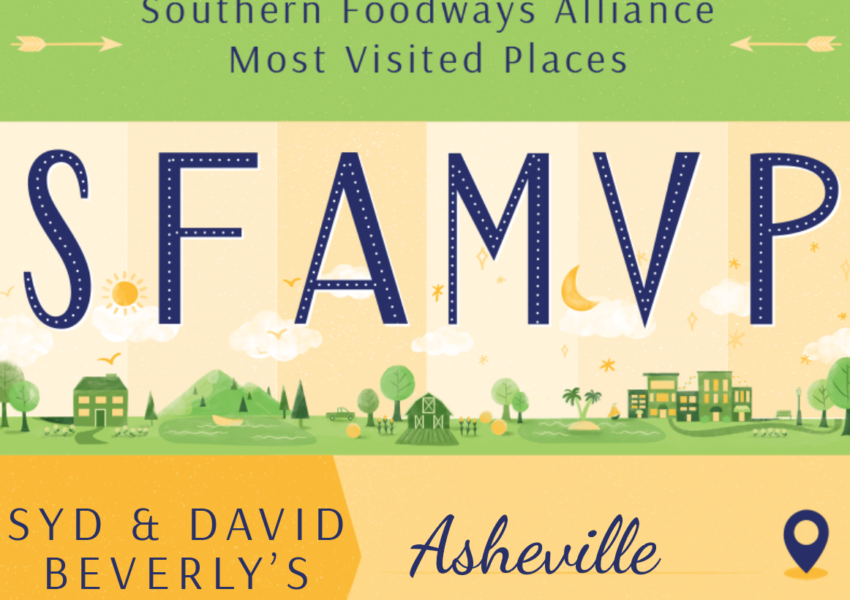DON'T CALL IT A POT PIE Winston-Salem’s Moravian currency
By Debbie Moose (Gravy, Spring 2016)
Moravian chicken pie isn’t just comfort food. It’s currency. At Moravian churches in Winston-Salem, North Carolina, the price of building fellowship halls, replacing copiers, or repairing sanctuary roofs has, for generations, been stated not in dollars, but in chicken pies.
![]()
The chicken pie has become such a part of food-related fundraising in the city that churches of all denominations hold sales. Some are once a year at holiday bazaars, others are year-round operations with commercial freezers and armies of volunteers.

Many sweet-toothed North Carolinians know about the Moravian treats that I grew up with in Winston-Salem — paper-thin Christmas cookies and yeasted sugar cake. The Moravian church originated an area that is now the Czech Republic. Members came to America for religious freedom in the eighteenth century, bringing their baking traditions with them.
Unless you’ve spent time in Winston-Salem, it’s unlikely you’ve ever heard of Moravian chicken pie. You might even say the heretical: “Oh, you mean chicken pot pie.”
Do not ever call it pot pie unless you want some righteous wrath to come down on you.

Moravian chicken pie is simple: Line a pie pan with crust; add cooked chicken with broth or gravy; top with another crust; bake. No peas, carrots, onions, or other vegetables inside. Some cooks sprinkle a butter-flour crumble on the top crust or offer extra gravy for serving. But there’s no gussying up the pie with herbs and such.
Moravian chicken pie is the humble laborer in the vineyard, providing warm, embracing meals for the table and support for the church treasuries.
As is the case with simple dishes, every cook insists that his or her way of making the pie is the best.

As is the case with simple dishes, every cook insists that his or her way of making the pie is the best. Some churches use whole stewing hens while others go with all white meat as a bow to current preferences. The whole-hen approach is probably closer to how chicken pie was originally prepared, according to researchers at Old Salem, the eighteenth-century restored Moravian settlement in Winston-Salem.
For frugal home cooks, chicken pie was a way to use up leftover meat or the final fate of unproductive laying hens. Meat pies are made all over Europe, so it’s reasonable to think that the early Moravians brought the idea with them. Historical recipes are scarce because chicken pie was something that cooks simply made for dinner using what they had.
Records at the Moravian Archives in Winston-Salem show that chicken pie suppers as church fundraisers go back at least to 1920. Today, nearly every Moravian church in town holds a chicken pie sale sometime during the year, as do a good number of churches of other denominations. My mother, a Presbyterian, obtained her Moravian chicken pies from a United Methodist church, where volunteers crank out up to 180 pies at a time to freeze and sell year-round.
Moravian chicken pie is ecumenically delicious.
 Debbie Moose is a freelance writer based in Raleigh, NC. Her most recent book is Southern Holidays: A Savor the South Cookbook.
Debbie Moose is a freelance writer based in Raleigh, NC. Her most recent book is Southern Holidays: A Savor the South Cookbook.




